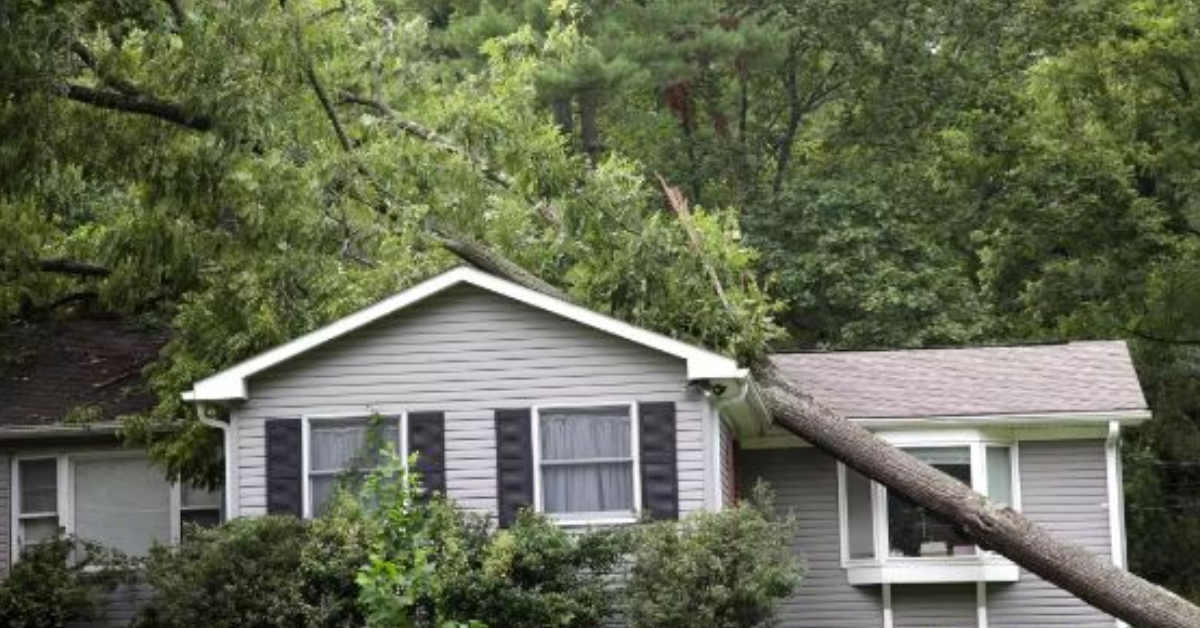
What Is Hazard Insurance?
DEFINITION: Hazard insurance is the part of your homeowners policy that covers the structure of your dwelling if it takes damage from specific disasters, such as fires, hail, storms, and more.
Hazard insurance is the part of your homeowners policy that covers the structure of your dwelling if it takes damage from specific disasters, such as fires, hail, storms, and more.
Here’s what you should know about hazard insurance, including how it works, what it covers, and when you might need it.
Definition of Hazard Insurance
Hazard insurance is one of the coverages that your homeowners insurance policy provides. It covers the structure of your dwelling if it sustains losses or damage from certain natural disasters, sometimes known as hazards or perils. It’s the same as your policy’s dwelling coverage.
You’ll often see damage from storms, fires, and vehicle crashes listed as covered risks. However, flooding and earthquakes are usually not included.
People sometimes use the term hazard insurance interchangeably with homeowners insurance, but technically, they’re not the same. Hazard insurance is a subset of the coverage from a homeowners policy, while homeowners insurance includes a variety of coverages (other structures on your property, personal property, certain liabilities, and more).
That said, if a mortgage lender asks you to get hazard insurance, they’re talking about buying homeowners insurance. You generally can’t purchase hazard coverage on its own.
- Alternate names: Dwelling insurance; peril insurance
How Hazard Insurance Works
Your land and buildings are valuable assets that are inherently vulnerable to the elements. You probably don’t want to risk leaving them uninsured, whether you own the property as a resident or an investor.
Unsurprisingly, your mortgage lender doesn’t want you to either. Most lenders require that you get a homeowners policy with hazard insurance to qualify for financing.
If a covered incident occurs, your hazard insurance coverage is what requires your insurance provider to reimburse you for some or all of your losses, minus your deductible and up to the policy limit.
Note: Depending on whether your policy covers your dwelling’s actual cash value (ACV) or replacement cost, you’ll get more or less money for your claim. Replacement cost policies cover the entire cost to repair the property with something of like kind and quality, usually up to its current price. ACV policies adjust that number down to account for depreciation.
For example, say you have an ACV homeowners policy with hazard insurance and a $1,000 deductible. You come home one day after a storm to find that the wind knocked a tree over into your house, crushing part of your roof. The repairs will cost $12,000, but since you last replaced your roof, it’s depreciated by $3,000. If your claim is successful, you’d net $8,000 in insurance proceeds ($12,000 minus depreciation and your deductible).
Note: New building codes can significantly drive up the cost to rebuild or upgrade a damaged home to meet your city’s current codes. Standard homeowners insurance policies don’t cover these additional costs unless you have a special rider on your policy called ordinance or law coverage, also known as building codes coverage.
What Does Hazard Insurance Cover?
Hazard insurance covers damage to the structure of your residence from certain perils. The exact perils covered depend on your policy, but often include:
- Fire
- Hail
- Lightning
- Theft
- Vandalism
- Fallen trees
- Vehicles that run into your home
- Explosions
Note: Don’t assume that your policy covers water damage from storms just because it covers the trees they blow over. Hazard insurance typically does not include damage from flooding or earthquakes. You’ll usually have to buy separate policies to cover those forms of damage.
Do I Need Hazard Insurance?
Hazard insurance is a part of your broader homeowners insurance policy, so any situation where you might need to insure a property that you own generally requires you to get hazard insurance.
Most often, that happens when you’re trying to close on a mortgage. Your lender will typically tell you to buy a homeowners policy with sufficient hazard insurance before you can close. The home is the lender’s collateral, after all.
Keep in mind that even if you own your property outright, you should still get hazard insurance to protect your investment.1
If you’re renting your residence, hazard insurance probably isn’t going to be relevant. Instead, your landlord or whoever owns the building would have this policy, since it covers the building itself. However, a renters insurance policy often covers damage to your belongings from similar perils.
Key Takeaways
- Hazard insurance is the part of your homeowners policy that covers damage to your property’s structure from disasters (dwelling coverage).
- Hazard insurance usually includes coverage for various forms of damage from storms, fires, vehicle crashes, and other perils, but not flooding or earthquakes.
- If you own land or buildings, also known as real property, you should consider having hazard insurance as part of your homeowners policy. It’s too risky to go without, and if you use a mortgage to buy a home, your lender will require it.
To read the full article, click here.